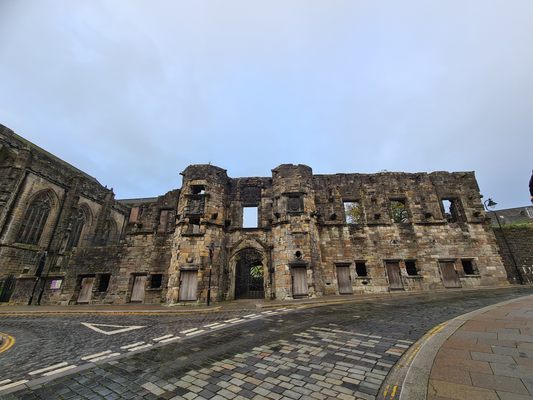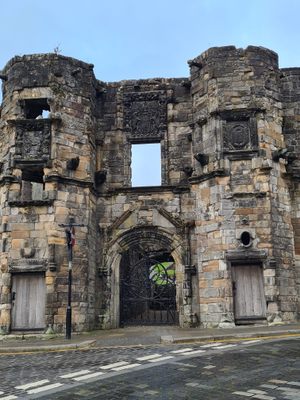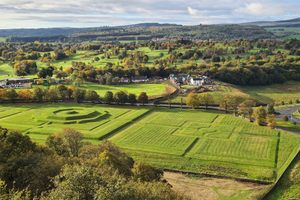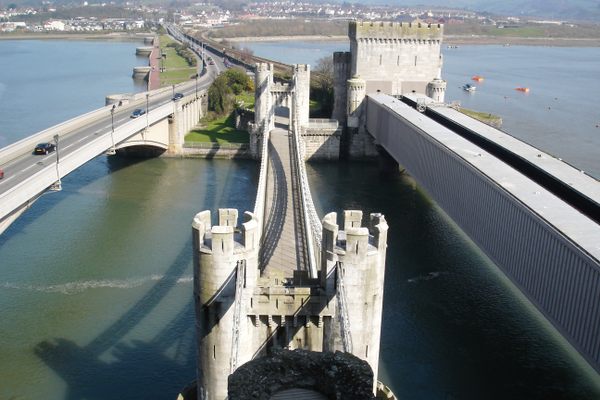About
Mar's Wark was built by John Erskine, the Regent of Scotland and Earl of Mar, who intended the building to be his principal family residence in Stirling.
Erskine was the governor of Edinburgh Castle during the regency of Mary of Guise, from 1554 to 1560. However, he turned against her daughter, Mary Queen of Scots, after the murder of her second husband Lord Darnley in 1567. Consequently, he lost his governorship in Edinburgh, but became the hereditary keeper of Stirling Castle, a position that had been held on and off by his ancestors since the reign of King Robert I. It is thought that this is when construction on the property began.
The building stands in front of the churchyard of the Holy Rude Church, a position which allowed it to also sit at the head of the processional route that continues up the hill to Stirling Castle above the town's tollbooth.
The façade is nearly symmetrical in design, focused around a gatehouse with two polygonal towers. The entrance led into a courtyard, around which the two-story lodgings were arranged. The basement vaults have doors and windows which face out onto the street and it is believed that they may have been intended for shops.
The remains of the building are covered with royal and Erskine heraldry and wry inscriptions. Local lore alleges that the carvings on Mar's Wark include stones recycled from Cambuskenneth Abbey. If you study the remains closely, a consecration cross can be found in the stonework, which lends some credence to this claim.
Towards the center is the figure of woman who is bound by criss-crossing ropes. This is supposed to represent Joan of Arc, also known as Jeanie Dark by the Scottish soldiers who joined her campaign against the English.
It is often said that the building was never finished, but there is little evidence to support this theory. (Although there might be some truth to the fact it was probably unfinished at the death of Regent Mar in October 1572.) In fact, evidence points to Erskine's widow, the Countess Annabella, using the building for some time after his death. For example, in April 1584 supporters of the Earl of Angus were ordered to surrender the castle and the town gates of Stirling with the "lodging of Annabell, Countess of Mar, and other places of fortification." In 1602, a French ambassador, the Baron de Tour, recorded coming to Stirling and having a talk with the Countess in "Lady Mar's House."
The 6th Earl of Mar, also called John Erskine, had the house refitted for use as a barracks during the 1715 Jacobite Rising, which he led. The failed uprising resulted in his exile and the forfeiture of family estates, which included Mar’s Wark.
The windowless front façade of the building still survives but is lacking its upper story, access to the first floor is usually possible.
Related Tags
Flavors of Scotland: Beyond the Haggis
Smoked seafood, single malt whisky, and warm hospitality.
Book NowPublished
December 2, 2021

















































